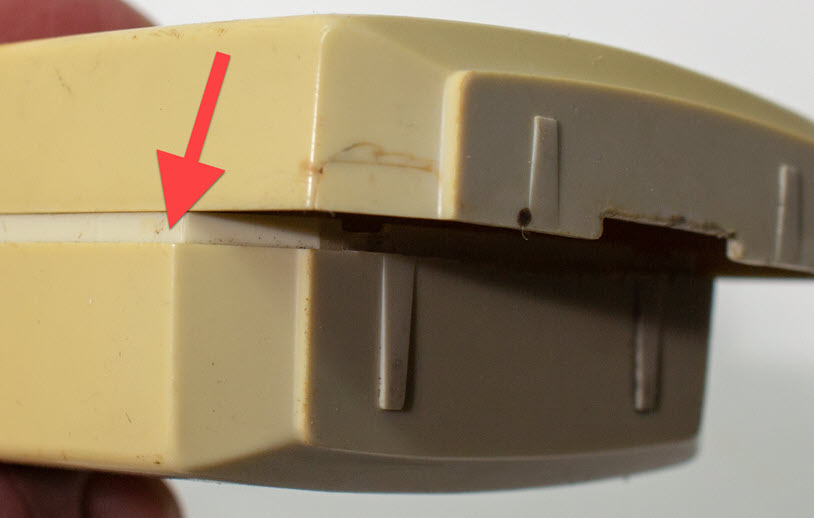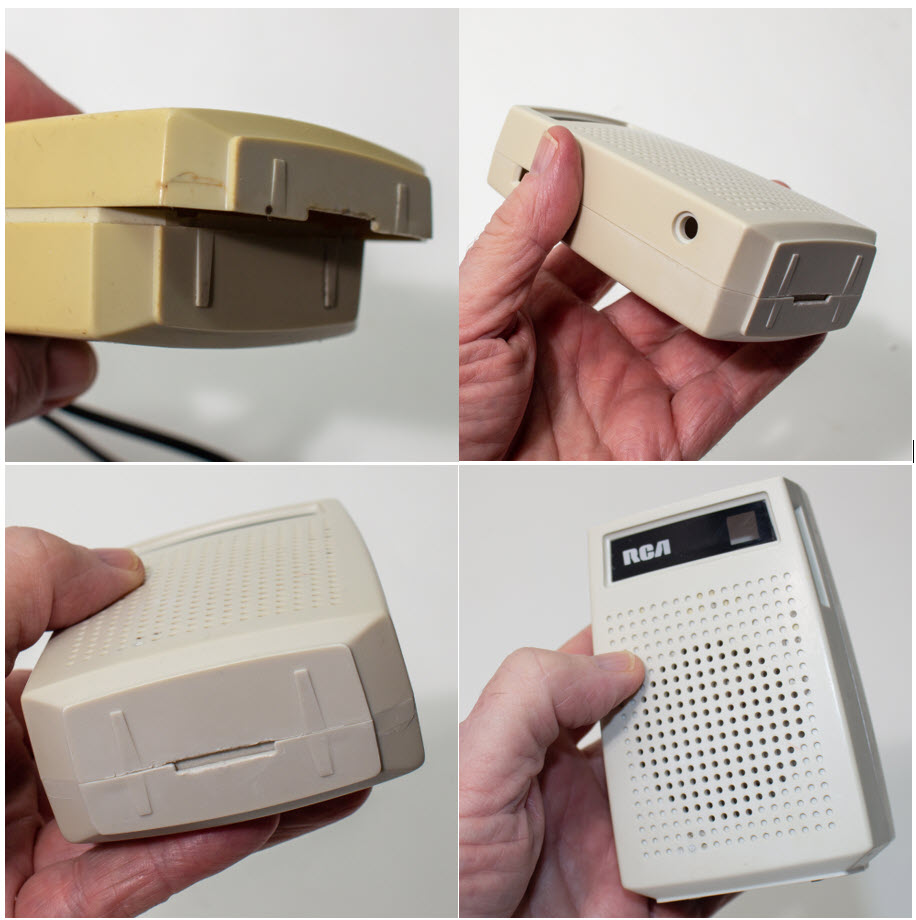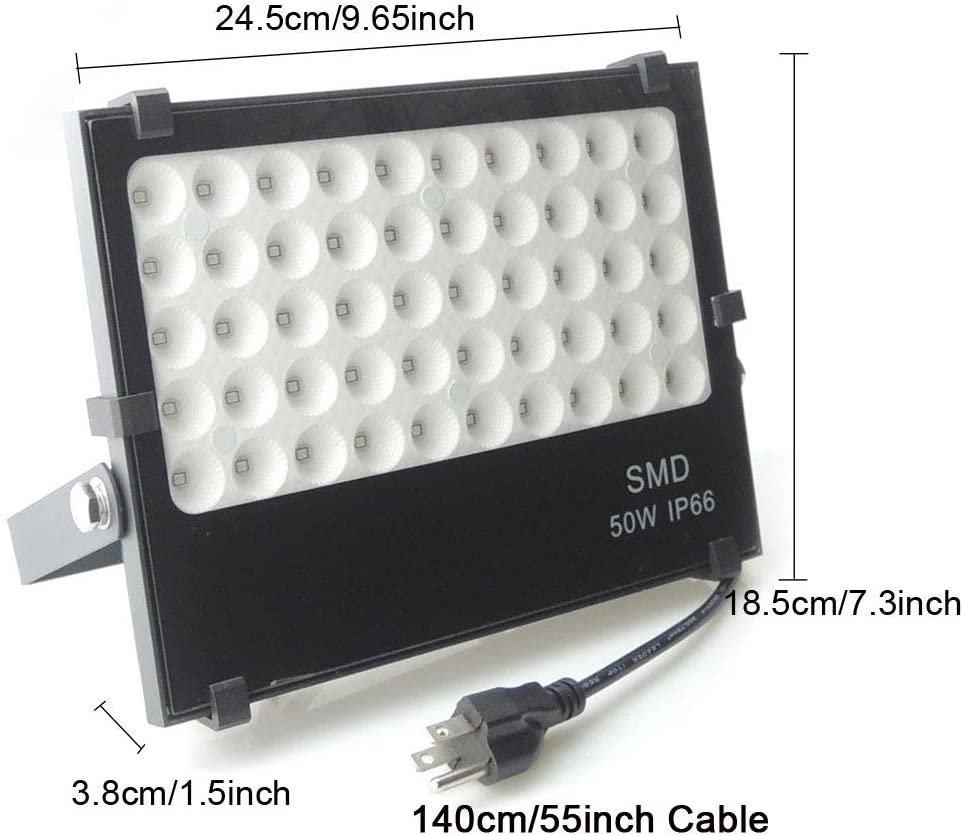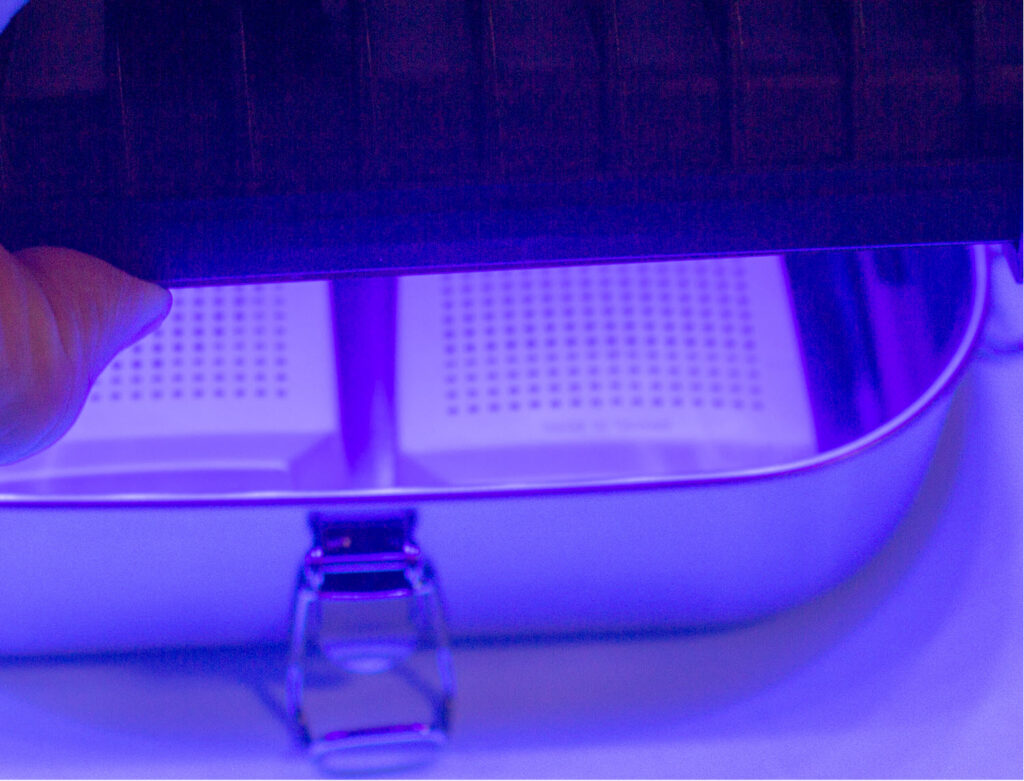Chances are that some of your radios have been in the sun too long. Their plastic surfaces have become discolored. White and other light plastic colors turn yellow, for example. This is easiest to see when you inspect the color of plastic in areas hidden from the sun. Look at the inside of the case, or at other surfaces shaded by knobs, badges and so on.

Fading also occurs in some plastic color dyes after UV exposure. UV from the sun the breaks plastic polymer chains and forms free radicals. This can even continue while plastic is being stored in the dark after significant prior sun exposure.
Hydrogen Peroxide to the Rescue
To reverse some or all of this aging plastic can either be submerged in Hydrogen Peroxide liquid or coated with paste and exposed to ultraviolet light.

Hydrogen Peroxide is an organic compound consisting of two hydrogen (H) atoms along with two oxygen (O) atoms, and is written H2O2. Itis available in a number of strengths typically between 3% and 35%. Strengths above 35% are not available for sale to American consumers.
For our purposes, 12% solutions, (also labeled as 40V) are ideal. Stronger solutions are tricky to handle and can be dangerous if misused or improperly stored.
You can purchase 12% solutions as either a liquid or paste online, and in hair product stores. Weaker solutions will work, but more slowly.
UV as a Restorative
Ironically, the same light that damages plastic can be used to speed up the restoration process. Plastic repair can occur in as little as four-hours, but typically takes 24-to-48-hours or longer.
Although placing submerged or coated objects in strong, direct sunlight will work, there are risks with that approach. Plastic can melt or distort in the heat from strong sunlight. Moreover, sunlight can be unpredictable. Clouds cover it. The sun moves throughout the day and, in most parts of the country, does not shine 24/7. Fortunately, there are a number of sources of bright, reliable, Ultraviolet LED light. Here’s the one that I use.

A working Setup
The photo below shows an indoor setup consisting of a stainless-steel container, and an LED Ultraviolet light source. You might need to add stainless steel weights to keep plastic pieces from floating up if you use the solution rather than the paste.

The hardware items are all available on Amazon and elsewhere for Under $75.00.
A one-gallon container of 12% solution or paste will set you back about $35.00 each. You can purchase smaller quantities, which will cost more-per-ounce. This might be prudent if you only plan to use it occasionally.
Once opened, these products tend to degrade in a matter of months. Sealed bottle contents typically have a two-to-three-year shelf life. An easy way to test effectiveness is to pour a little into a sink or container and watch for bubbles. Lack of bubbles means that the solution is no longer viable.
Safety Considerations
- Use a 12% (40V) Hydrogen Peroxide solution rather than anything stronger.
- Work in a well-ventilated area.
- Avoid inhaling the fumes.
- H2O2 can cause irritation if it comes into contact with your eyes, skin, or throat.
- Wear gloves and goggles. Long pants and shirtsleeves are recommended as well.
- Avoid splashing the liquid.
- Keep H2O2 out of your hair.
- Supervise small children around this work.
- Do not mix H2O2 with oils or other combustibles.
- Store sealed containers in a dark, dry area.
- Do not look directly at the UV light. It can cause eye damage.
In case of an accidental ingestion, call the Poison Control helpline at 1-800-222-1222 or use the online tool to determine whether you should seek medical attention. In case of an emergency, always call 911.
Try It!
Here are the steps for a typical restoration. Your first attempt should be on a radio you can live without if you damage it.
- Remove the radio’s innards.
- Remove all metal trim. Hydrogen Peroxide will damage most metals other than stainless steel.
- Clean the plastic thoroughly with rubbing alcohol or other cleaner to remove dirt that will otherwise cause streaking and spots as the chemistry works.
- If using the solution, place the parts into enough solution to completely cover them. Use stainless steel weights to hold down the parts if they float. (Stainless steel nuts or bolts work well for this.)
- If you are using the paste, apply it liberally with a paint brush or old toothbrush. There is no need to submerge the parts in solution if you use the paste.
- Expose the plastic to strong, even UV light.
- After about four-hours, check the progress. If you are using weights to hold down the plastic, move them to different locations to prevent uneven UV exposure. Remember to use gloves and don’t splash.
- Continue exposing and moving the pieces and weights until you are satisfied with the results.
- Rinse the parts thoroughly.
- Dispose of the used solution in a toilet or sink, being careful not to splash. Do not pour the used solution back into the bottle with the unused.
Low Cost Container
If you don’t want to spend money on a stainless container, a plastic storage tote will work just fine. If the container is transparent, wrap aluminum foil around the outside of it so that the UV light will reflect back into the container.